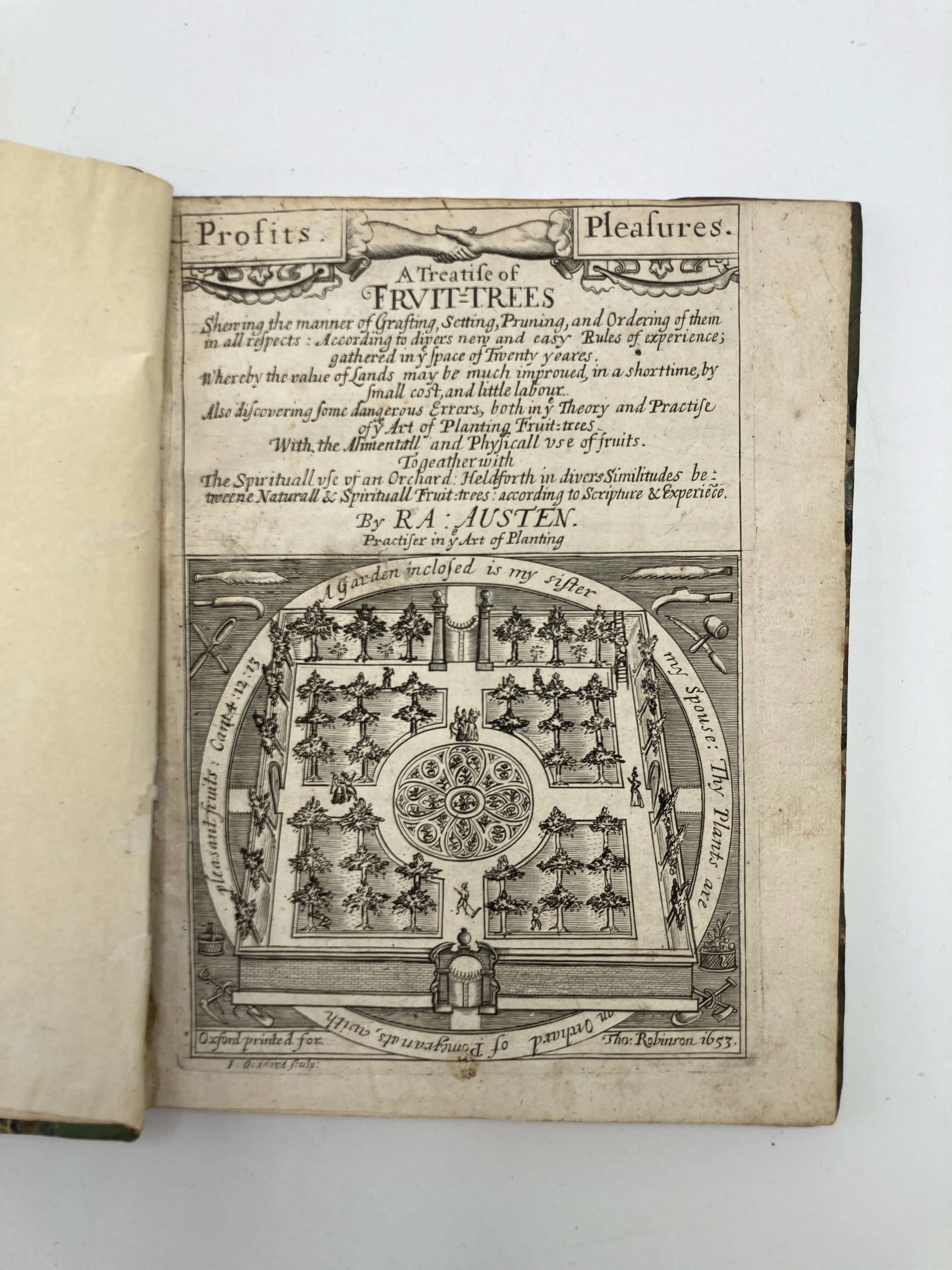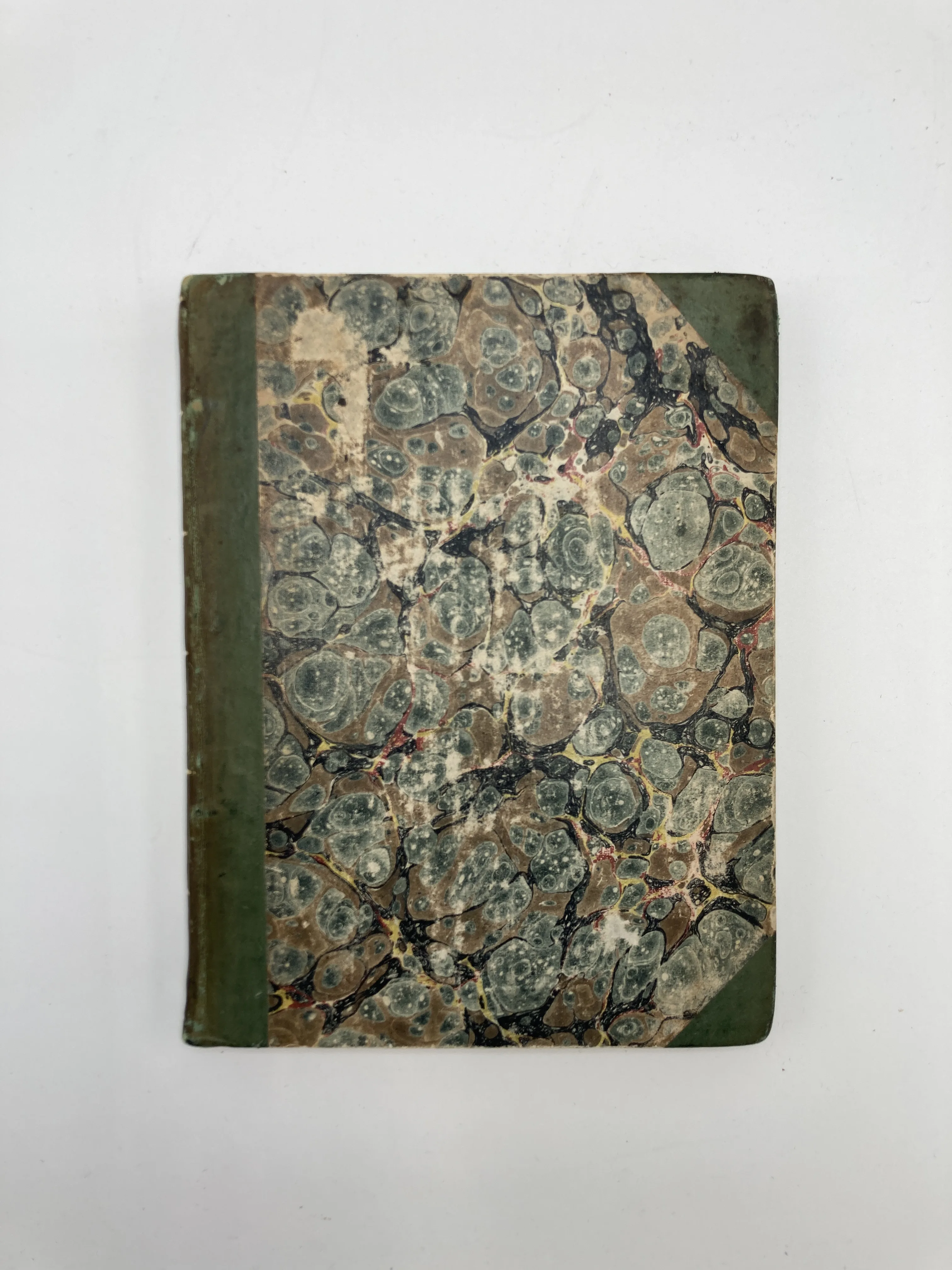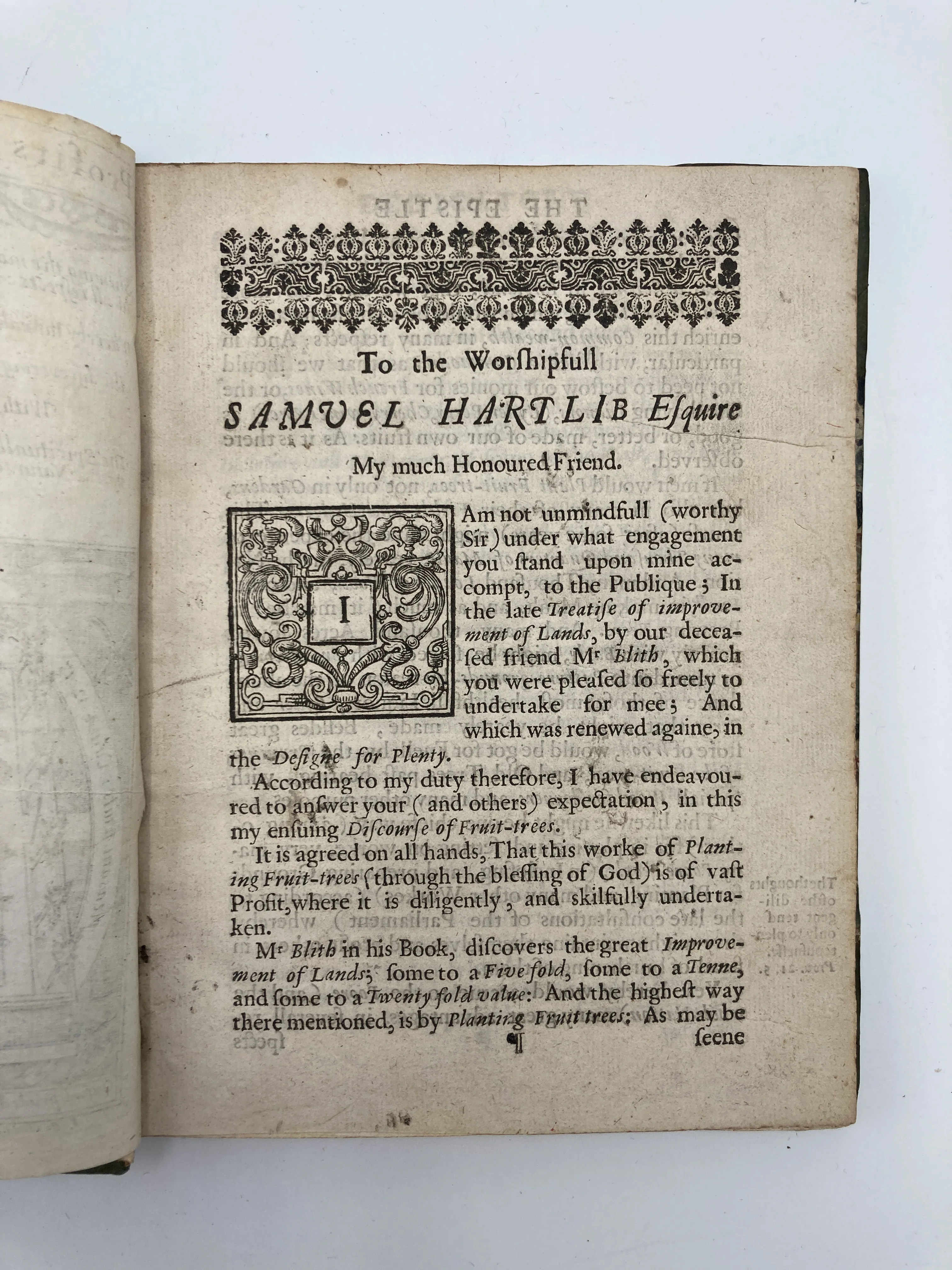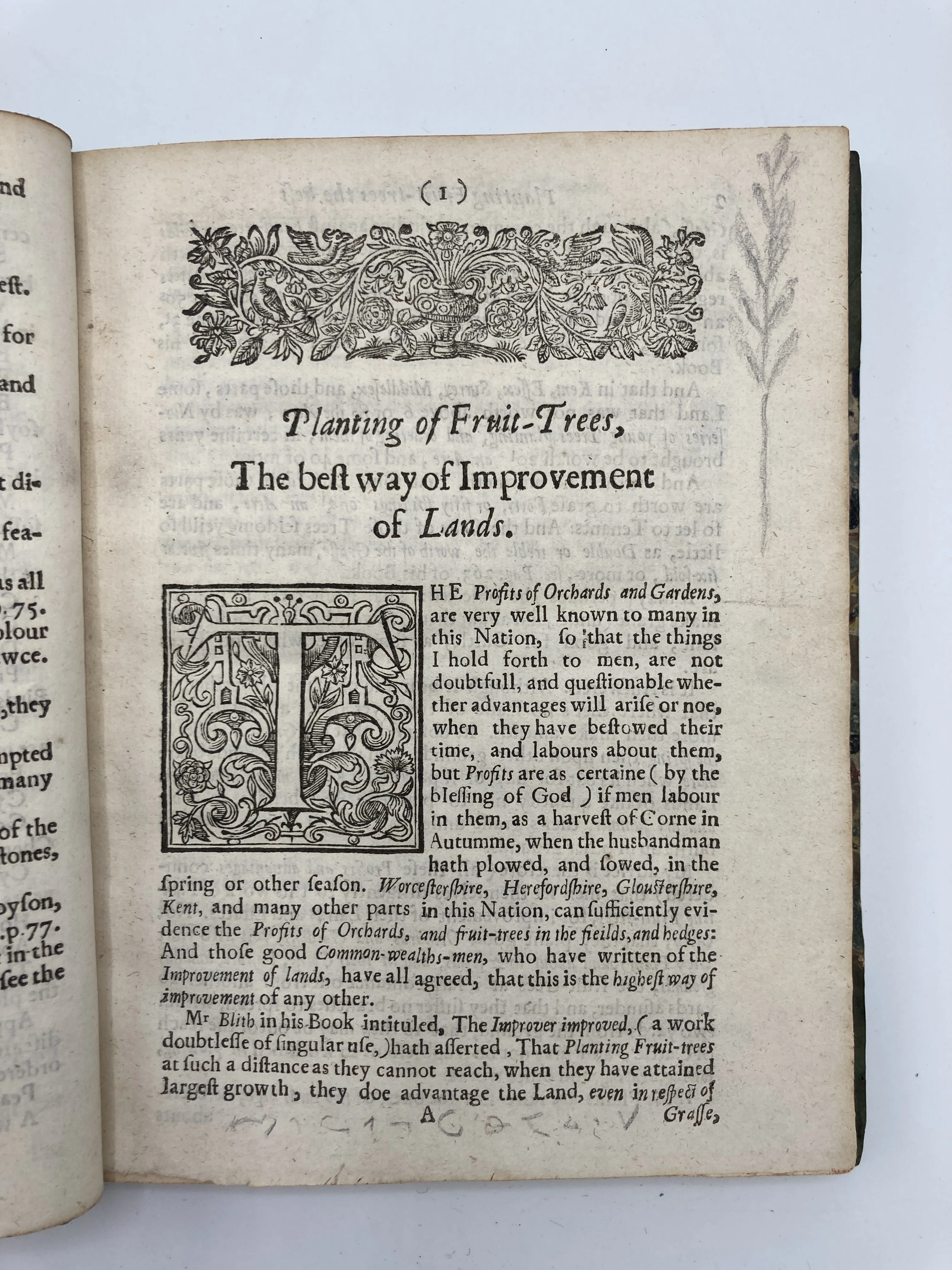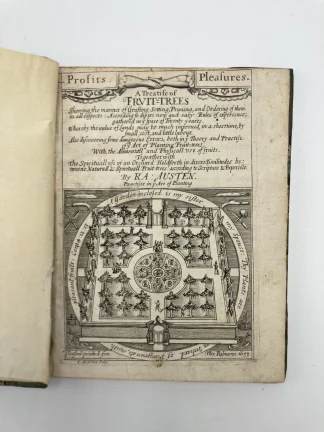AUSTEN, Ralph
A treatise of fruit trees...
Oxford, Thomas Robinson, 1653.£1,950.00
FIRST EDITION. Small 4to. Pp. [26] 29, 32-97 [13], 32, 35-41 [1], complete. Roman and Italic letter. Two parts in one, separate t-p to each. First with engraved frontispiece bird’s eye view of a walled orchard, surrounded by tools, by John Goddard, encircled by a verse from the Song of Solomon. Second title within typographical border, historiated first initial to each part, ornaments throughout. 19th C marginalia in pencil and earlier in ink, including names ‘Thomas Clayton’ and ‘Oliver Cromwell’. Bookplate of Sir Robert Adair (1811-1886) to front pastedown. Occasional marginal ink stains and lightly age yellowed. A good copy in 19th C green half calf over marbled boards, title and date gilt to spine, a.e.r.
An interesting work by a self-taught gardener, Ralph Austen (c.1612-1676), who ‘devoted most of his time to gardening and the raising of fruit trees’. He was admitted to the public library in Oxford, where he sought materials for his book in 1652, publishing the following year. His method can be described as ‘innovative, experimental, and sceptical of the authority of theorists’. The book contains two distinct parts, the first focusing on the practical aspects of gardening, such as preparation of the ground, sewing of seeds, protection from pests, grafting, and inoculation. It then conducts a survey of different trees, their fruits and optimal use in food, drink and medicine: walnuts are said to help digestion, mulberry juice stirs up one’s appetite and sharp cherries are good for the blood and kidneys.
In the second part, Austen takes a more spiritual approach, explaining in his preface that ‘the world is a great library, and fruit trees are some of the books, wherein we may read and see plainly the attributes of God’. Referring amply to scripture, Austen uses the gardening of fruit trees as an extended metaphor for God’s power and influence in the world, explaining the state of the world in terms of God as a gardener. He makes observations from nature and ties each point to a religious parallel. The frontispiece by John Goddard, an early English engraver, is emblematic of this point. The verse refers to the enclosed Garden of the Song of Solomon, but the image also shows gardening tools and a planting plan. The work brings together husbandry and religion in a unique way.
ESTC: R12161, Pritzel: 357; Macdonald: p.203; Henrey: 4, 5.In stock


